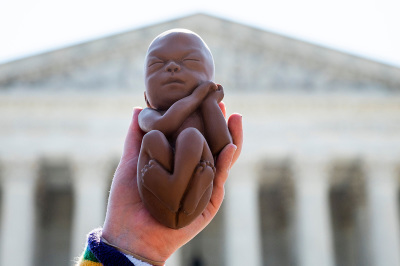Minority neighborhoods need maternity wards, not crack pipes

The Biden administration has authorized a new $30 million grant program directing federal funds to purchase “harm reduction” supplies for drug users. It specifically targets minorities, or “underserved communities” like minority neighborhoods.
Biden has defended the program by challenging rumors that the “safe smoking kits” funded by the program will contain crack pipes, although other safe smoking programs across the country have indeed distributed smoking pipes. Regardless, the question remains as to why passing out needles and smoking kits to addicts is thought to be meeting the greatest needs of minority communities.
The Biden administration seems to have missed the even deeper needs of underserved minority communities: access to grocery stores, pharmacies, and perhaps most importantly, birth wards and quality medical care. Given that February is Black History Month, there seems to be no better time than the present to consider the disproportionate lack of resources that underserved minority communities face.
Take the nation’s capital, for example. Washington, D.C.’s local government is separated into eight wards roughly equivalent in population size. Although ward boundaries are largely determined by geography, the unfortunate reality is that the wards divide the city’s population by race and socioeconomic status.
The combined population of Wards 7 and 8, which are separated from the rest of the city by the Anacostia River, is over 160,000 people, 90% of whom are black. Despite having population sizes roughly equivalent to the other wards, Wards 7 and 8 have a combined total of only three grocery stores. In contrast, the other six wards have a combined total of 71 (an average of 11.8 per ward). Ward 8 has only seven pharmacies to service its 80,517 residents.
There is only one hospital that services Wards 7 and 8 — United Medical Center, a poorly-rated hospital that is planning to cease operating entirely by 2023. Notably, there is no hospital with a birth ward east of the Anacostia River, meaning that mothers in Wards 7 and 8 must travel across the river in order to deliver their children. This fact is especially concerning considering that Ward 8 has the highest birth rate in the city. The mortality rate for black mothers in D.C. is 71 per 100,000 live births — 50 points higher than the national average of 20.1, which is already the highest rate for any developed country.
A solution to the disproportionately high black maternal mortality rate should include expanded access to the medical care that mothers and babies need to thrive. However, the abortion industry insists that the solution that will empower the black community is advancing abortion, which only ends unborn black babies’ lives. In a recent commentary on Black History Month, Planned Parenthood stated, “When restrictions are placed on birth control and family planning, Black communities bear a disproportionate burden.” For Planned Parenthood, abortion constitutes family planning.
In reality, the black population has the disproportionate burden of being targeted for abortions. Almost 80 percent of surgical abortion facilities are within walking distance of minority neighborhoods. In 2019, black babies represented 38 percent of total U.S. abortions, even though black Americans only comprise 14 percent of the U.S. population. A New York City Health Department report found that between 2012 and 2016, there were 18,299 more black babies aborted than black babies born in the city. Abortion does not empower the black population — rather, it is slowly shrinking it.
The Biden administration’s funding of “safe smoking kits” represents another failure to meet underprivileged communities in their blatantly obvious areas of deepest need. Minority communities need grocery stores, pharmacies, and real health care — not smoking kits, syringes, and abortionists waiting to kill their children.
As the United States celebrates Black History Month, the nation should pause to reflect on the current state of the union for under-resourced minority communities. Despite the immense progress made in the past century, there remain areas in which the black community is neglected or continuously targeted for harm. Initiatives like “harm reduction” programs for drug users and blocking protections for the unborn are red herrings that distract attention from the disparities in resources needed to promote human flourishing.
Originally published at The Daily Signal.
Joy Zavalick is Research Assistant for the Center for Human Dignity at Family Research Council.




























